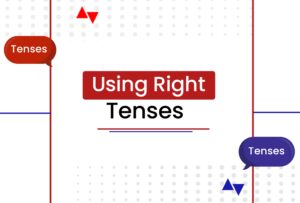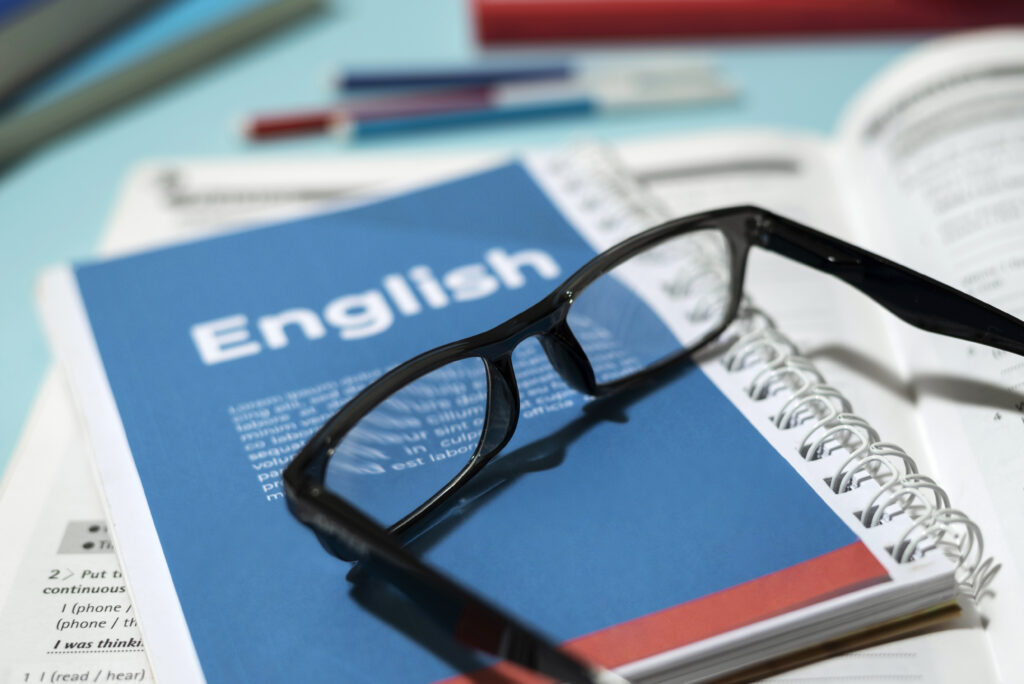Est. reading time: 6 minutes

We can’t mention sentence structuring without talking about “tenses,” and these tenses are oftentimes associated with their related verb forms.
Learning tenses and their correct usage is a great way to improve your English, and understanding them will help your speech.
Without further ado, let’s move on to what tenses entail.
Tenses: What Does It Mean?
Tenses in the English language show when an action happened, in other words, they help to describe the time of an occurrence.
It refers to how verbs change to indicate when events occur or when actions are performed by individuals or things.
To describe this better, we have three (3) major tenses: present, past, and future. Later in the article, we will see how tenses can be used to depict the time an action occurs.
Types of English Language Tenses
In the English language, twelve tenses aid sentence structuring and they all stem from the major group of tenses; the present, past, and future tense.
Additionally, the three major tenses are further divided into four, namely; simple, perfect, continuous, and perfect continuous.
We will take each of the tenses step by step for clearer understanding.
Present tense
The present tense is simply a tense that shows an ongoing action or occurrence. It is used to describe something you are currently doing or something that is currently happening.
Here’s an example of the present tense:
- I am very hungry.
- She is in the library.
These two examples show that the action is ongoing at the moment.
Past tense
From the word “past,” we can simply say that it’s a tense that shows an action that already occurred. Below are some examples of a past tense.
- I had ice cream yesterday.
- He went home last week.
Future tense
As for the future tense, it describes an action that has not occurred but will occur in the future. It is often used to make assumptions and predictions about a situation.
Most times, the future tense is formed by using a helping verb like “will” and “shall.”
Good examples of this are:
- I will do her hair.
- Felix will go out tomorrow.
- We shall meet at the park.
The Four-tense Subdivision
The major tenses (present, past, and future) are subdivided into four namely; simple, continuous, perfect, and perfect continuous tense.
Simple tense
The simple tense refers to the normal state of the past, present, and future tense. Nothing more, nothing less. We will see some of these examples as we go on.
Perfect tense
The perfect tense refers to actions that have been completed before speaking.
When using the perfect tense, the word “have” or “has” is usually added.
For instance, in the sentence “Temi has gone to pick up some food,” the phrase ‘has gone’ indicates that Temi went to pick up some food already, and the action has been done before the moment of speaking. It could be minutes before or hours before.
Continuous tense
Also known as progressive tense, continuous tense indicates an ongoing action or an event that is in progress at a particular time.
Continuous tenses are formed by using a form of the verb “to be” (such as “is,” “am,” “are,” “was,” or “were”) followed by the present participle (-ing form) of the main verb.
An example of this is:
- He is eating dinner.
Perfect continuous tense
The perfect continuous tense is quite interesting and it is a beautiful blend of both perfect and continuous tenses.
It shows an action that begins from the past, which then continues for some time before becoming recently completed. It is formed from a combination of the “to have” form, the past participle verb “been”, and the present participle in the -ing form.
For instance:
- She has been singing all day.
Now that we have the basic knowledge of what each tenses entails, let’s see how they are being combined and what makes up the twelve tenses.
Present simple
The present simple is just a simple description of the present tense. It is used when describing an action, wish, or emotion.
Here are examples:
- She eats the right rice.
- He enjoys playing games.
- They speak Korean fluently.
Present continuous
Earlier in the article, we talked about how the continuous verb is formed from the “to be” verb forms, followed by the present participle of the main verb in the -ing form.
An instance where the present continuous tense can be used is when you want to describe an action that is currently taking place.
Examples:
- The baby is sleeping.
- Why are you leaving early?
- Jaden is studying for an exam.
Present perfect
The best tense to describe a past occurrence that affects the present is the present perfect tense.
It is used to describe an uncompleted action that started in the past or a past action that was completed recently. Most times, it is used to emphasize the importance of a completed action.
Let’s take a look at some examples:
- Tade has finished her homework.
- I have visited Korea.
- She has seen the movie already.
Present perfect continuous
In describing a relevant past action or a past action that is relevant to the present, the present perfect continuous tense is used.
For example:
- She has been waiting for this moment.
- They have been reading for four hours.
Past simple
The past simple tense is used to describe an action that has been completed in the past.
- I graduated from the university in 2023.
- We got our first home last year.
- I had croissants and tea last night.
Past continuous
To show an action that was in progress at a particular moment in the past, the past continuous tense is used. Oftentimes, when describing the past continuous tense, another action usually interrupts the ongoing past action.
Here are examples:
- I was watching a movie when the power went out.
- He was playing when he fell.
- She was driving to work when her car broke down.
To make this easier, you can follow this simple equation: “was” or “were” + the present participle.
Past perfect
The past perfect shows that an occurrence or action happened earlier than another action. Let’s say you’re trying to describe two past events and you want to show what event happened before the other, then you should use the past perfect tense.
- They had eaten when I got there.
- Janet had graduated when they increased the school fees.
When it comes to the past perfect tense, the word “had” is usually used. Just note this simple equation to make it easier for you: “had” + past participle.
Past perfect continuous
While the past perfect tense shows a single occurrence of action earlier than the other, the past perfect continuous describes a past event continually. Words like “before”, “when”, and until” are usually used to link the ongoing action to the past action.
In the case of past perfect, we looked at the use of “had” and the past participle. However, in the case of the past perfect continuous tense, the use of “had”, “been,” and “present participle” is employed.
Let’s take a look at an example:
- He had been studying Medicine in Nigeria before he got a Computer Science admission in London.
Future simple
The future simple tense is simply used for an action that is yet to happen or an action that will happen later in the future.
Examples of the future simple tense are:
- They will buy the food.
- She will register for the conference tonight.
Future continuous
For a future event that will happen over some time, the future continuous tense is usually employed. The future continuous tense is used to indicate an ongoing action or event that will be happening at a specific point in the future.
By combining the future tense of the verb “to be” (will be) with the present participle (the -ing form) of the main verb you can form a future continuous tense.
Unlike the future simple tense, the future continuous tense shows more certainty of an occurrence.
Let’s check out this example:
- By this time next year, I will be living in my own house.
Future perfect
The future perfect tense is used to describe an action that will be achieved or completed in the future at a definite time, i.e. it describes the likelihood of an action being completed at a specific point in the future.
- By the afternoon, she will have gotten home.
- I will have gone by then.
Future-perfect continuous
To describe an event that will have happened later, the future perfect continuous tense is used.
That is where the use of “been” comes in. To simply explain this, let’s check out this simple equation: will + have + been + present participle.
Let’s now form a sentence from this.
- In two months, I will have been celebrating my 20th birthday.
The 12 Tenses Table
Let’s see a beautiful mix of these tenses on a table.
| Present | Past | Future | |
| Simple | I have ice cream. | I had ice cream yesterday. | I will have ice cream tomorrow. |
| Continuous | I am eating ice cream today. | I was having ice cream when you called. | By this time tomorrow, I will be having ice cream. |
| Perfect | I have finished my ice cream. | I had already eaten my ice cream when the snow started. | By evening, I will have gotten my favourite ice cream. |
| Perfect Continuous | I have been waiting to eat ice cream. | I had been eating ice cream until you called. | In a few hours, I will have been eating my favourite ice cream. |
Conclusion
Learning tenses might be quite confusing, however, if you take your time to go through this article and practice more examples, you will be able to get a better understanding of how to use your tenses correctly.


Interesting captivating.
More Grace & unusual illumination